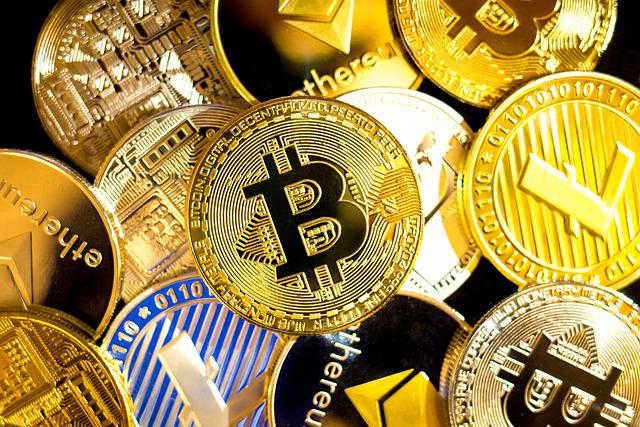Could a Cryptocurrency Resurgence Take Hold When Inflation Drops? – Yahoo Finance
Key Points
Inflation has surprised to the upside in the last few quarters, defying calls that it was “transitory” or had peaked.
This has resulted in a drastic hawkish policy shift from major central banks, which has battered speculative assets like crypto.
A sustained fall in inflation rates during H2 would likely see cryptocurrencies post an impressive recovery.
<h2…….

Key Points
-
Inflation has surprised to the upside in the last few quarters, defying calls that it was “transitory” or had peaked.
-
This has resulted in a drastic hawkish policy shift from major central banks, which has battered speculative assets like crypto.
-
A sustained fall in inflation rates during H2 would likely see cryptocurrencies post an impressive recovery.
“Transitory” Inflation Narrative Crumbles
The cryptocurrency market’s fall from grace since last November coincides almost exactly with one of the largest policy shifts from major central banks in a generation. At the start of last November, Bitcoin was trading above $60,000 and Ethereum near $5,000, while central bankers were holding into the now-discredited belief that the surge in inflation witnessed during mid-2021 would be “transitory”.
Inflationary pressures would quickly subside as the pandemic fades and global supply chains normalize, central bankers reasoned at the time, meaning that they could continue holding interest rates at zero and buying bonds in their billion via QE. This mindset began to shift in November as inflationary pressures across major economies, far from receding, continued to accelerate into the final quarter of 2021.
The Bank of England was the first to realize it needed to do something about inflation and came close to hiking interest rates in November, while there was also a big shift in tone from the Fed, arguably the world’s most important central bank given the US dollar’s status as the global reserve currency.
By the end of December, the Fed had signaled that its QE program would be wound down by the end of Q1 2022 with rate hikes soon to follow. By this point, realizing that the era of ultra-accommodative central bank policy was soon coming to an end, Bitcoin had corrected to the mid-$40,000s, about a third below its record levels back in early November.
The Fed ended its QE buying on schedule in March and, as expected, implemented its first rate hike since 2018 of 25 bps. Fearing that it had fallen behind the curve in tackling inflation, the bank came close to raising interest rates by 50 bps but decided not to given the uncertainty surrounding the war in Ukraine which had just begun. This patient start to its hiking cycle helped keep Bitcoin supported in the mid-$30,000 to mid-$40,000 during Q1 2022.
But the inflationary impact of the Russo-Ukraine war, as well as renewed, harsh lockdowns across China amid the country’s struggle to adhere to its zero-Covid-19 strategy in the face of the highly transmissible Omicron variant, made itself clear as Q2 2022 got underway. Inflation hit 8.5% YoY in the US in March, its highest in four decades, making it abundantly clear to the Fed that it needed to accelerate the pace of rate hikes this year and get back to the so-called neutral rate (around 2.5%) as quickly as possible.
Markets began pricing a series of 50 bps rate hikes for the June, July and September meetings as the Fed delivered on a 50 bps rate hike in May. This further battered cryptocurrency sentiment, with Bitcoin falling 17.3% and 15.6% respectively in April and May respectively.
“Peak” Inflation Narrative Crumbles
Still, chatter at the Fed and amongst economists that US inflation rates had now hit their “peak” kept Bitcoin supported near the $30,000 level throughout the second half of May.
The Fed wouldn’t have to take interest rates too much beyond neutral given that inflation will soon start falling, market participants reasoned. But the “peak” inflation narrative would soon suffer the same fate as the “transitory” inflation narrative.
US CPI data for May released on 10 June revealed that inflationary pressures in the US had accelerated and broadened once again, pushing the YoY rate to a fresh four-decade high at 8.6%. The Fed, who had been guiding markets to expect a 50 bps rate hike at the 15 June meeting, scrambled to “leak” its new intentions to lift interest rates by 75 bps to the market ahead of the meeting.
Having delivered a 75 bps hike earlier this month, markets expect another 75 bps hike next month, followed by a 50 bps rate hike in September. Meanwhile, the latest rate guidance from the Fed in the form of its quarterly dot-plot that it released alongside its meeting earlier this month showed policymakers expect interest rates nearing 4.0% in 2023, well above the neutral rate.
This further hawkish shift in Fed expectations delivered a further beating to cryptocurrencies and other risk-sensitive/speculative assets (US equities are also in a bear market now, for example). Between 10 and 18 June, Bitcoin lost as much as 40% of its value, dropping from near $30,000 to print new 18-month lows in the $17,000s.
As of Thursday, Bitcoin was last consolidating just above the $20,000 level, down roughly 70% versus its record highs hit last November.
Fall in Inflation Needed For a Crypto Rebound
Just as the surge in global inflationary pressures since 2021 and subsequent hawkish central bank reaction has been the key driver of the crypto market’s tumble from 2021 peaks, an easing of global inflationary pressures and subsequent dovish central bank reaction could be a major driver of a recovery in the years ahead.
Even though it has continually surprised to the upside, most economists and market participants think that inflation in the US and elsewhere will eventually ease. Fiscal stimulus has shrunk dramatically in most advanced economies in 2022 versus 2021 and central banks are aggressively lifting rates, all while the surge in global energy and food prices takes its toll on economic growth.
These are deflationary headwinds to the global economy that seem increasingly likely to trigger a recession and, one would assume, should eventually result in inflation rates subsiding.
But the timing of this is all very uncertain and the longer that inflation remains elevated, the greater the risk that central banks like the Fed will need to take interest rates even further above the neutral rate in order to slow the economy and ease inflation.
In the absence of clarity about the inflation picture, it makes sense to adopt a defensive stance when investing in crypto. If inflation keeps surprising to the upside, a drop back under $20,000 for Bitcoin is likely.
But in the more optimistic scenario, say inflationary pressures do begin easing in the second half of this year. Maybe this is because the US economy falls into recession, which isn’t exactly optimistic. But for crypto, anything that reduces the pressure on central banks to be hawkish will be positive.
A sustained fall in MoM and YoY US inflation rates during H2 this year would likely see cryptocurrencies post an impressive recovery. Bitcoin could easily recover $30,000. However, in the near future, in the absence of all of the monetary stimulus excess of 2021, it will be hard for crypto to recover back to record levels.
For this to happen in the next few years, it would probably take either some big strides forward in terms of crypto’s mainstream adoption (major US regulation and the introduction of spot crypto ETFs), or a new (deflationary) economic crisis that sees major central banks like the Fed taking interest rates back to zero and restarting QE.
This article was originally posted on FX Empire
More From FXEMPIRE:
Source: https://finance.yahoo.com/news/could-cryptocurrency-resurgence-hold-inflation-124032992.html







